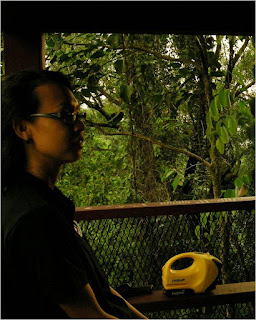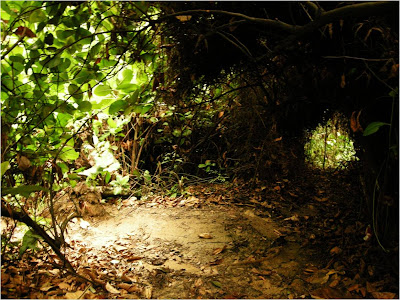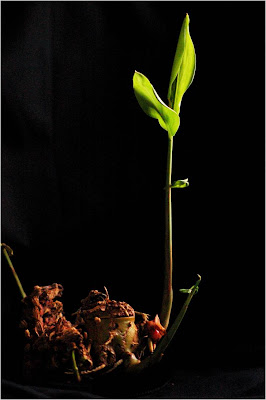April was, on the whole, a stressful month, not least because it was exam season (my very last undergraduate exam season) and also thesis draft deadline.
But there were some truly uplifting and encouraging moments.

Professor Wu of the University of Guelph gave a talk during our Ecoparasitology lab session on the 9th. One of the things that resonated most with me was when he said that no time is ever wasted, be it time talking to someone, or listening to someone, or studying something that apparently does not contribute to your present direction in life.
If I might rephrase what he said, I think it would mean something like, there are opportunities to learn great things wherever you are, whatever you are doing.

That same evening, Juin and I took a walk in Bukit Gasing. She wanted to get away for a while, and was thinking of a waterfall. While there was no waterfall there, it was a pleasant trip... until we got lost!
It was a good thing we had a torch with us, and I can still hear what the Uncle said when he saw my
parang; "Eh, it's very good, yes!" and as he continued downwards, "I also should get."

Dusk over KL.

Two roads diverged in a quickly darkening wood.

7th April: enter the 'blowpipes' and 'darts' of Lab B1.2, Institute of Biological Sciences. I suppose the stress was getting to all of us.
On the 8th I attended the Theatre Elective class's performance of E.N. Dorall's
A Tiger is Loose in Our Community at the PJ Live Arts Centre in Jaya One. Mr Dorall was a teacher at the VI in the 60s, and it was then that he wrote the play, which was first staged by Victorians.
It was Yesterday Once More at PKV for the last time on the 9th, though this time around we had much fewer graduating seniors than before. Still, it was good listening to Ann Gie, Chian Ming and Rachael.
That same night I had dinner with Michelle at the Six-to-Ten Grill, Happy Mansion. Nice place.
The 10th was Tim's 22nd birthday. Ann Gie, Ruth, Shannon and Tim had a
dim sum brunch at SS2; sorry, Chian Ming, that it was a little too late for you to join us!
And then, in the midst of study week, I did one of the most spontaneous things this side of the adventures with Kaun back in first year: I followed Juin back to Terengganu for three days. She decided that she wanted to see her family, and there was the convenient excuse of being able to bring her sister home instead of having to take a bus.
I figured it might be a good change in environment, especially since the thesis wasn't really going anywhere in my room in college.
Juin, if and when you read this, thank you very much for everything. Please convey my thanks to your parents, your grandmother and your sisters also. Sometimes it happens that as one is about to graduate, one no longer expects to be surprised by great and unexpected things. Thanks to all of you, my final weeks were that much more colourful!

On day one of exam week, three days before my first paper, I attended a dinner with Maura Pally, the U.S. Acting Assistant Secretary of State (Bureau of Education and Cultural Affairs) and some alumni members of the various exchange programmes between the States and Malaysia.
I was pleasantly surprised to see Professor Datuk Dr Khaw Lake Tee there. Turns out she once visited the States on an Eisenhower Fellowship, and continues to work closely with the U.S. Embassy in Malaysia.

This is a picture I took of How's ginger,
Alpinia galanga.
The story goes that all his gingers failed to grow properly, because they were planted in pots. Gingers, being rhizomes, need much space. As to why his thesis supervisor did not warn him of this earlier, I have no idea.
But what was interesting was that the ginger started to grow quite well when he merely left the rhizome on his desk in the room. There it lay, with no soil and hardly any water, and it sent shoots out.
I decided to try to make the ginger look good, to make it look better than any of our theses were going to be; you might say it wasn't a particularly encouraging time for any of us. So I propped it on my chair, resting somewhat on my belt, with my blazer for a backdrop.
April was a stressful month, but not without its silver linings.

































































